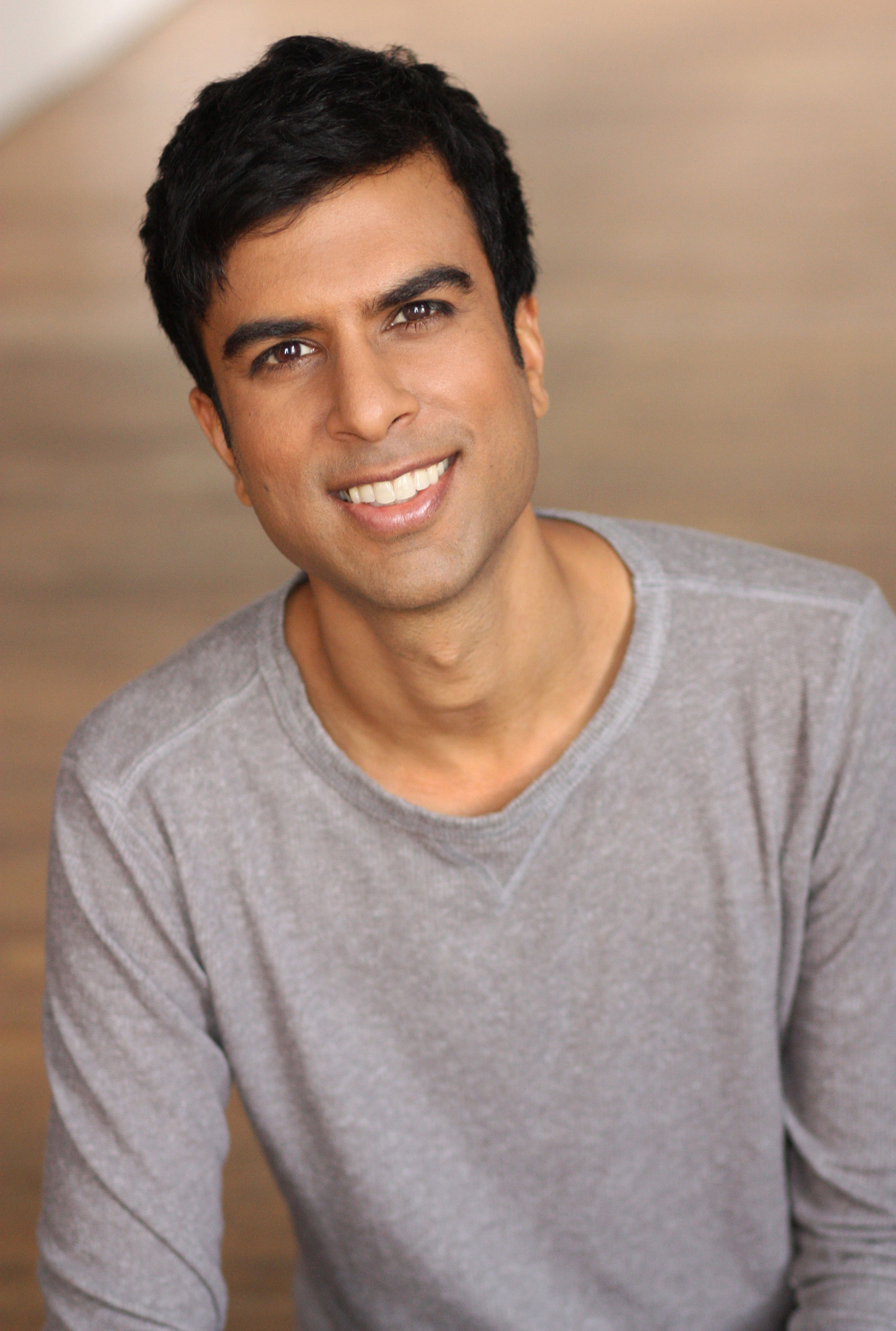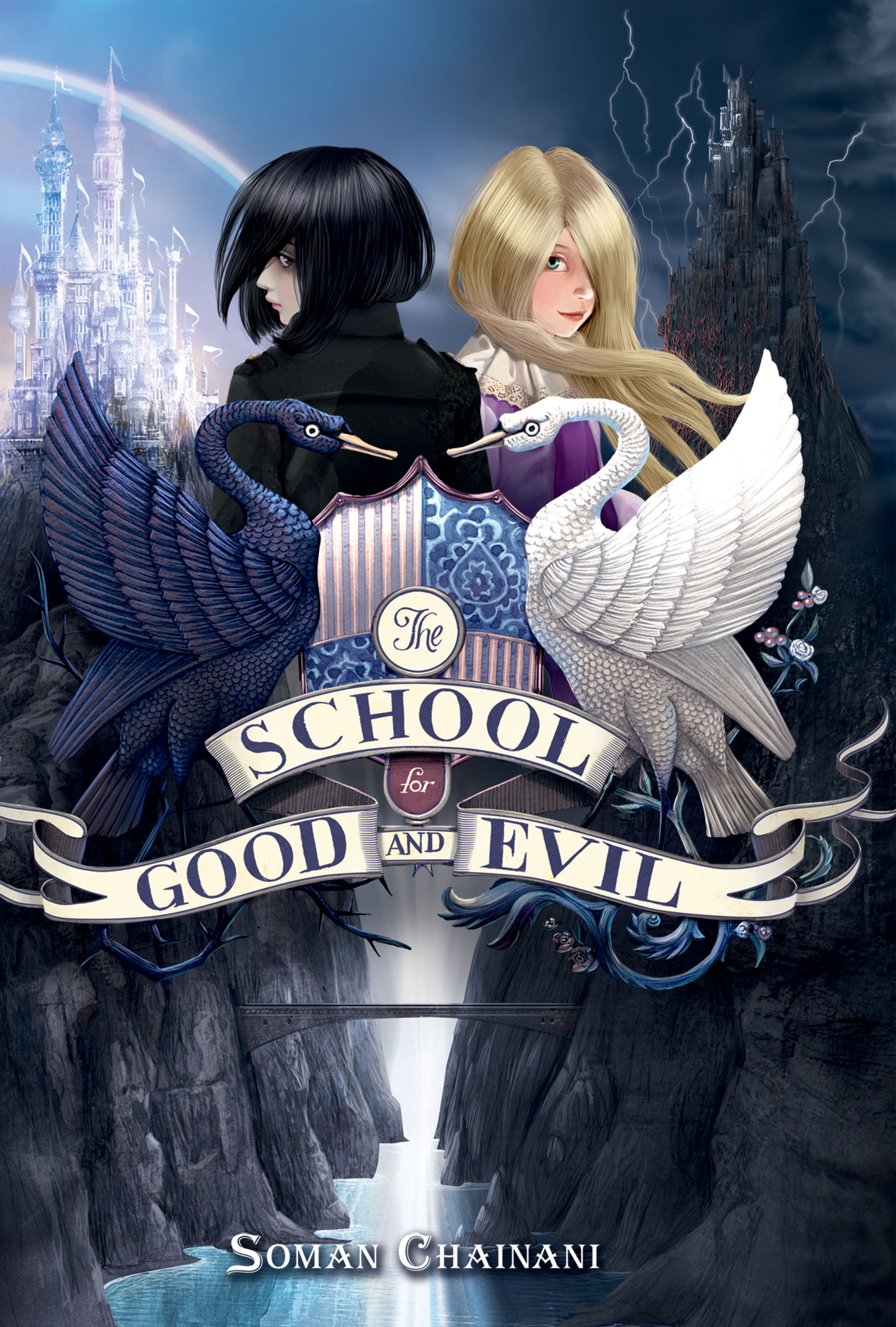 “Writing has always felt like breathing,” Soman Chainani says. “If I don’t do it for a while, I start to feel like I’m dying.”
“Writing has always felt like breathing,” Soman Chainani says. “If I don’t do it for a while, I start to feel like I’m dying.”
Writing also affects time. It makes it disappear in a magical way. “It challenges every part of me so intensely that I forget who I am, where I am, or how long I’ve been there,” the author told Cracking the Cover. “Most of all, I love that writing forces you to surrender. You cannot, cannot control your writing — for if you’re not surprised by it, how do you expect the reader to be? For someone as controlling and tyrannical as I am, writing forces me to trust the little elves inside to do the work.”
It’s that kind of attitude that makes Soman’s new novel for young readers, “The School for Good and Evil,” (HarperCollins, May 14, 2013) so successful. The book, which is the first of a planned trilogy, tells the story of best friends Sophie and Agatha, who find themselves where all the “lost” children go — The School for Good and Evil. The school prepares ordinary boys and girls to become fairy tale heroes and villains, and it’s fairly obvious that beautiful Sophie will end up in the School for Good and dark Agatha will attend the School for Evil. Except that’s not where they end up. And no one is happy about that turn of events.
Soman began toying with various aspects of the book almost 15 years ago. He’s a self-described “obsessive student of fairy tales” who, as a child, watched Disney cartoons so often he knew every frame.
“When I went to Harvard, I literally created my own major around fairy tales, with a focus on female villains,” Soman explained. “I wanted to understand: What makes a female villain so compelling? ‘The School for Good and Evil’ seeks to answer that question.”
The book begins with Sophie and Agatha being kidnapped from their village. It’s a slightly creepy entrance into the world Soman created, but it’s in keeping with the literature he grew up with.
“I love reading fantasy, but I’m slightly allergic to books that begin in the fantasy world,” Soman says. “I need that portal from the real world into the extraordinary, whether it’s the wardrobe in Narnia or the rabbit hole in Wonderland. So I knew I wanted the kids to be whisked from our world into the Endless Woods. But the idea really took hold when I had this delicious image of a girl who wanted to be kidnapped. Because I suspect a lot of children who read fantasy novels harbor that thought themselves…”
 When writing a book that focuses on two sides of a coin, many authors slip more comfortably to one side than the other. But Soman says both schools have so many colorful details and comic characters that he feels equally at home in both.
When writing a book that focuses on two sides of a coin, many authors slip more comfortably to one side than the other. But Soman says both schools have so many colorful details and comic characters that he feels equally at home in both.
However, “I do wake up a little perkier on the days I’m writing Sophie’s scenes,” the author admits. “She’s just such an enormous character that I relish the tightrope act of making her at once ludicrous and alluring. Whenever she and Agatha get together, they’re dialogue sparks so naturally for me. They’re the ultimate odd couple. (My favorite line in the novel is Sophie’s retort to Agatha upon achieving popularity: ‘If you want to talk to me, Agatha, you can wait in line with everyone else.’)”
Soman says he lives so deeply in the world he created that he tries not to judge or compare it to other books. “What I would say is that one of the reasons I loved the classic fairy tales is that they were a guidebook to life for children and teenagers,” Soman further explained. “They didn’t sugarcoat or warm up their stories to make readers feel safe. Make the wrong choices and a child might lose their tongue or end up baked into a pie. My goal with ‘The School for Good and Evil’ was to write a modern day fairy tale that let young readers confront their own fears and anxieties with the same honesty.”
When writing for young readers, you have to be honest, Soman says. “Young people have no patience for overwriting, indulgence or poor storytelling. They are absolutely ruthless in their need to be engaged by the story and empathize with the characters. To me, it’s far more difficult to write a successful children’s novel than an adult novel because of how emotional they have to be. An adult novel can take an aloof, analytical perspective and impress with its wordplay. Children want to feel. So when an author can master that balance of story, emotion, and pace, it’s transcendent. Very, very few achieve it. But it seems like a worthy profession to give your life to trying.”
If early responses are any indication, Soman has accomplished just what he set out to do. Writing legends Gregory Maguire, R.L. Stine, Anne Martin and Maria Tatar have already put their stamp on the book. And fan art from advanced readers is already coming in — Soman created a gallery on the School for Good and Evil website.
Soman is currently writing Book 2 of the series, which he says has a soon-to-be-revealed, pretty nifty title. He also just completed the screenplay for the film of “The School for Good and Evil,” which is being produced by Jane Startz (“Tuck Everlasting,” “Ella Enchanted,” “The Babysitter’s Club”). Soman co-wrote the screenplay with Malia-Scotch Marmo (who wrote Spielberg’s “Hook”).
*What’s Soman Chainani‘s favorite fairy tale? Read the complete transcript of his interview with Cracking the Cover to learn that and more.
Which school would Soman Chainani end up in — Good or Evil?
I was so compelled by this question upon finishing the book that I launched an interactive game on www.schoolforgoodandevil.com that helps each reader answer this question for themselves. You can log-on and take a 10-question Entrance Exam to The School for Good and Evil that sorts you into your school as an Ever or a Never. It also computes what percentage of your soul is Good and what percentage of your soul is Evil. The questions change every time (and I’ve written all of them!), so be prepared for a stern test. I, myself, have taken the quiz honestly a few times and consistently get 75% Evil, 25% Good. So it appears I’m a Never after all. Not surprising.

2 Comments
I absolutely loved it! I’m glad to hear that it is planned as a trilogy. He did exactly what he set out to do. It was full of laughs but sucker punch full of sorrow as well.
Pingback: Kelcie Murphy and the Academy for the Unbreakable Arts is strong new series - www.crackingthecover.com